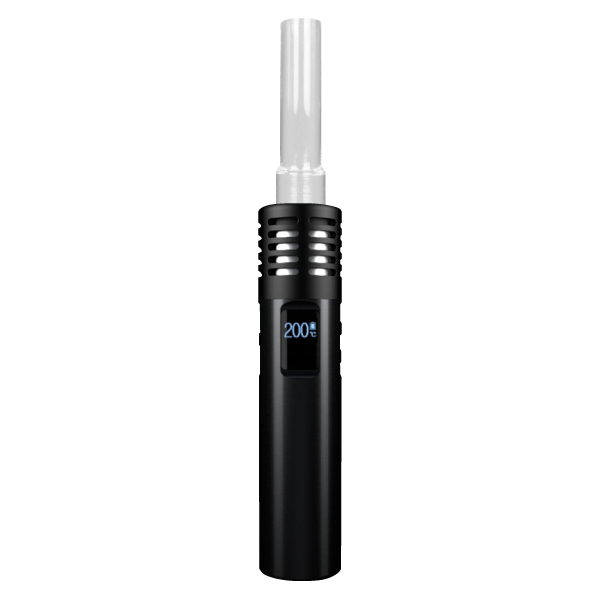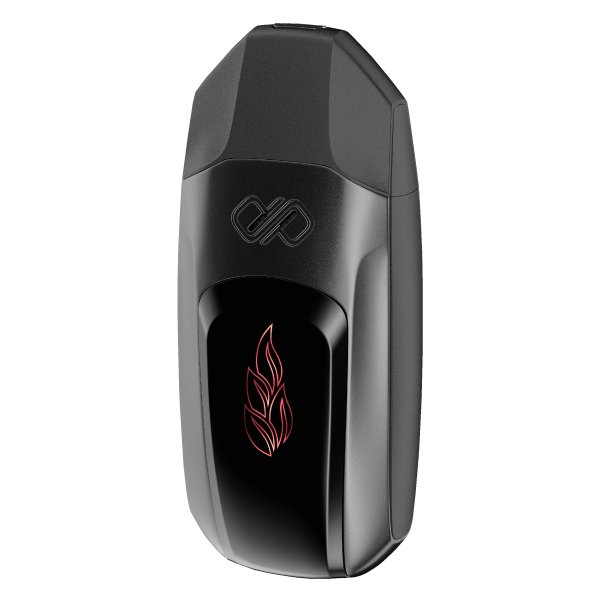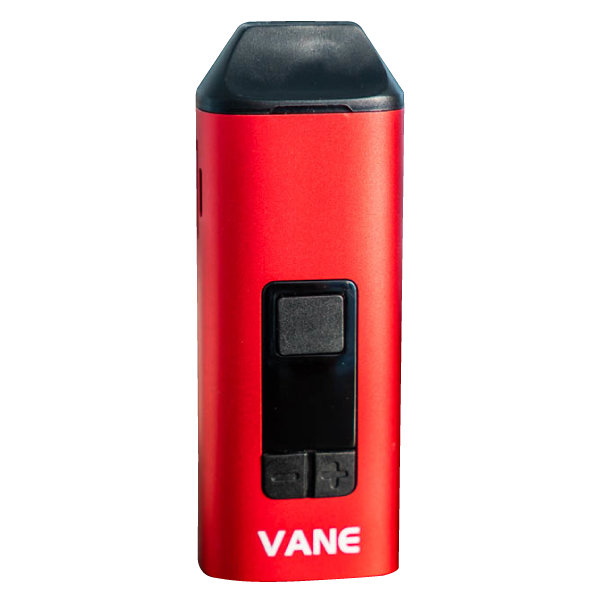- Release date: Jul 2022
- Temp settings: 375-428°F
- Precise temp control: Yes
Dry Herb Vaporizer Reviews
Dry herb vaporizers have transformed how we enjoy herbs, offering a more sophisticated and satisfying experience than traditional methods. We’ve been testing and reviewing vaporizers for over a decade, continuously updating this list with the newest vaporizer and latest releases. Read more ↓
- Release date: May 2022
- Temp settings: 250-450°F
- Precise temp control: Yes
- Release date: Mar 2022
- Temp settings: 212-464°F
- Precise temp control: Yes
- Release date: Apr 2022
- Temp settings: 122–428°F
- Precise temp control: Yes
- Release date: Jun 2022
- Temp settings: 200-428°F
- Precise temp control: Yes
- Release date: Feb 2022
- Temp settings: 302-437°F
- Precise temp control: Yes
- Release date: Feb 2021
- Temp settings: 212-428°F
- Precise temp control: Yes
- Release date: Nov 2021
- Temp settings: 401-437°F
- Precise temp control: Yes
- Release date: Sep 2021
- Temp settings: 104-410°F
- Precise temp control: Yes
- Release date: Oct 2021
- Temp settings: 122-500°F
- Precise temp control: Yes
- Release date: Sep 2021
- Temp settings: 104-410°F
- Precise temp control: Yes
- Release date: Nov 2021
- Temp settings: 212-428℉
- Precise temp control: Yes
- Release date: Jun 2021
- Temp settings: 4 Levels
- Precise temp control: No
- Release date: Dec 2017
- Temp settings: 355-420°F
- Precise temp control: Yes
- Release date: Oct 2021
- Temp settings: 355-420°F
- Precise temp control: Yes
- Release date: Dec 2021
- Temp settings: 320-430°F
- Precise temp control: Yes
- Release date: Sep 2021
- Temp settings: 140-446°F
- Precise temp control: Yes
- Release date: Mar 2021
- Temp settings: 140-446°F
- Precise temp control: Yes
- Release date: Mar 2021
- Temp settings: 140-446°F
- Precise temp control: Yes
- Release date: Mar 2021
- Temp settings: 212-464°F
- Precise temp control: Yes
- Release date: Dec 2020
- Temp settings: 200-480°F
- Precise temp control: Yes
- Release date: Aug 2021
- Temp settings: 355-437°F
- Precise temp control: Yes
- Release date: Mar 2020
- Temp settings: 302-437°F
- Precise temp control: Yes
- Release date: May 2020
- Temp settings: 375-428°F
- Precise temp control: Yes
About our Dry Herb Vaporizers Reviews
Dry herb vaporizers have revolutionized how enthusiasts enjoy herbs, offering a cleaner, more efficient, and flavorful experience. Whether you’re new to vaping or a seasoned user, finding the right vaporizer can enhance your sessions significantly.
Our reviews are designed to cut through the noise and provide you with clear, detailed, and honest evaluations of the best devices on the market. Be sure to check out our Best Dry Herb Vaporizers page for a curated list of top recommendations. For a complete guide, visit our Dry Herb Guide.
How We Test Dry Herb Vaporizers
Our testing process is rigorous, ensuring every vaporizer is evaluated thoroughly for quality and performance. Here’s how we do it:
- Initial Impressions:
- We assess the unboxing experience, inspecting the build quality and materials used in the vaporizer.
- Our experts verify the safety and durability of the components.
- Performance Evaluation:
- Testing heat-up time and accuracy across various temperature settings.
- Analyzing vapor quality for flavor, density, and smoothness.
- Evaluating the efficiency of herb usage, focusing on even extraction.
- User Experience:
- Assessing the ease of use for loading, cleaning, and operation.
- Considering portability for on-the-go users and durability for long-term use.
- Advanced Testing:
- Using thermal imaging to map heat distribution.
- Measuring draw resistance to ensure a smooth inhalation experience.
- Conducting long-term durability tests over extended sessions.
Categories of Dry Herb Vaporizers
- Entry-Level Models: Perfect for beginners, offering affordability without compromising quality.
- Mid-Tier Vaporizers: Balanced devices with a mix of performance and features for everyday users.
- Premium Vaporizers: High-end models equipped with advanced technology and superior materials.
- Portable vs. Desktop Vaporizers: Comparing compact, on-the-go options with powerful, home-use devices.
Key Features We Consider
When reviewing dry herb vaporizers, we focus on these critical features:
- Heating Methods: Comparing conduction, convection, and hybrid systems for efficiency and flavor.
- Temperature Control: Evaluating precision, flexibility, and ease of customization.
- Build Quality: Inspecting materials, craftsmanship, and overall durability.
- Battery Life: Testing for session longevity and charging convenience.
- Accessories: Highlighting useful extras like dosing capsules, water adapters, and cleaning tools.
Why Trust Our Reviews
We pride ourselves on unbiased, in-depth reviews backed by years of experience. Our team of experts applies scientific rigor and real-world testing to every device. By following our comprehensive process, you can trust that our recommendations are accurate and honest. Learn more about our testing protocols on our Testing Methodology page.
Dry Herb Vaporizers Jargon Explained
Dry herb vaporizers come with their own set of terms that might seem confusing at first. Here are some key terms explained:
- Conduction Heating: A method where the herb comes into direct contact with a heated surface to produce vapor.
- Convection Heating: A method that uses hot air to evenly vaporize the herb, preserving flavor and efficiency.
- Hybrid Heating: A combination of conduction and convection heating for balanced performance.
- Draw Resistance: The effort required to inhale vapor through the device.
- Session Mode: A mode where the vaporizer maintains a set temperature for an extended period, ideal for group use.
- On-Demand Mode: Heats the herb instantly for quick, single-use sessions.
- Vapor Path: The route vapor takes from the heating chamber to the mouthpiece, often made from materials like glass or stainless steel to preserve flavor.
- Cashed Herb (aka AVB): “Already Vaped Bud” refers to herb that has been vaporized and can still be used for edibles or other applications.
- Ball Vapes: A type of vaporizer that uses small ceramic or glass balls to enhance heat distribution and vapor production.
- Microdosing: Using small amounts of herb in a vaporizer for controlled, low-intensity sessions.
- Grind Consistency: The texture of the herb after grinding, which can impact vapor quality and efficiency.
- Herb Chamber: The part of the vaporizer where the herb is loaded and heated.
- Reclaim: Residue that collects in the vapor path, which can sometimes be reused depending on the device.
- Heat-Soak: The process of preheating a vaporizer to stabilize the temperature and improve vapor production.
- Cooling Unit: A component designed to cool down vapor before it reaches the user’s mouth, enhancing flavor and comfort.
- Airflow Control: Adjustable settings that allow users to control the draw resistance and vapor density.
- Dosing Capsules: Small, pre-filled containers that hold herb for convenient and mess-free sessions.























